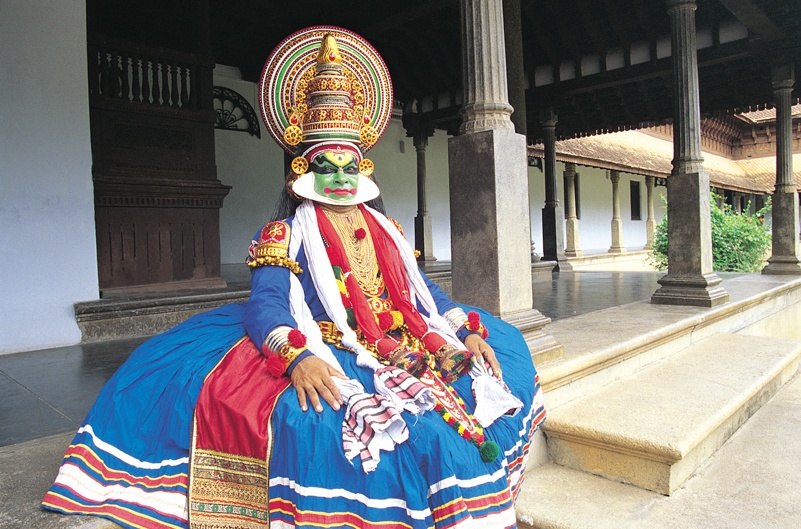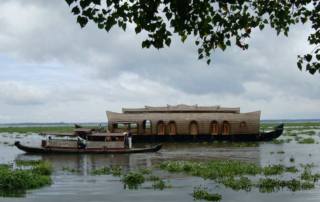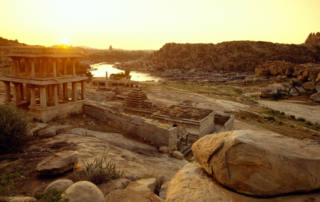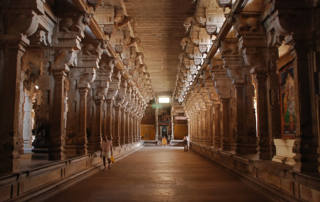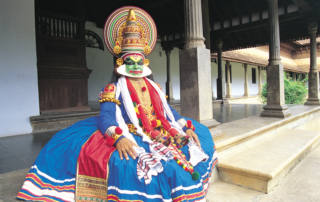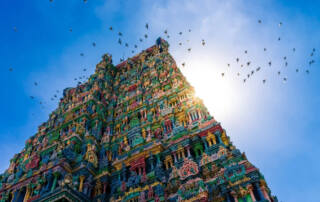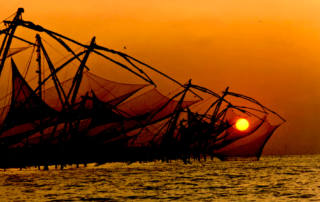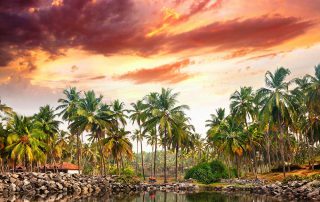14 DAYS/13 NIGHTS
Want to Know More About The Tour?
ABOUT
13 Nights 14 Days Visiting: Chennai /Pondicherry /Tanjore/Trichy/Madurai /Periyar/Kumarakom/Allepey/Cochin
South India’s yet another trip which covers some of the best-renowned temples cities, visit Pondicherry once a French colonial town still preserve its cultural routes and its colonial Houses, before heading deep in Tamil Nadu to witness wold famous Meenakshi temple a Unesco World Heritage site,head toward Periyar national park situated in western ghats, moving down to embark on backwaters of Kumarakom and Kerala and finally settle and fly back from Cochin a culturally rich modern city of India
Pre-departure planning is important. Here are certain things you should watch for and plan for.
Visas
Check with the Indian consulate or embassy in your country to find out if you will need a visa to visit the country of your destination, especially for an extended period of time. Some countries have extremely detailed and complicated entry/departure laws and treat visits of a week or two very differently from longer stays.
Money
If you’re traveling to one area, check the cost of living there. If it’s high you’ll probably want to budget more carefully and save some money before leaving. The lower the cost of living the less you’ll have to save, but be sure to have a backup reserve in emergency cases.
General Tips
Talk to other people who have done a similar trip.
If you don’t know anyone personally, try any of the dozens of online travel websites full of first-person travel stories covering every possible type of trip.
Plan big and loose. Read everything you can about the area.
There may be sights and attractions you didn’t know about. A rough outline of your trip might have three or four target points and a variety of ways to get between them.
You don’t want to find out that the weather isn’t what you thought, or the guide book was incorrect, after committing to 6 weeks in a specific spot.
Some trips will allow you more leeway than others. Travel plans in Asia can often be made day-by-day while summer travel in Europe should be organized at least a few weeks ahead unless you’re prepared to hunt around for hotel rooms and train seats.
Set up a pre-trip timeline so you don’t end up with a full to-do list during your last week of work or school.
Things to consider are doctor’s visits for a check-up, inoculations, and prescription refills; purchasing plane tickets; renewing passports and obtaining visas and other documents.
Check your insurance coverage abroad and purchasing additional travel insurance if needed. Don’t forget visiting friends and family members!e
The longer the trip, the lighter you should pack. This might seem strange, but it’s true you can afford to lug a heavy bag around for a week or two, but do you want to have anything extra for a year?
Stick to the absolute basics and know what you can and cannot buy at your destination(s). There’s no point in bringing 6 months of toothpaste to Europe or buying a sarong at home to take to the tropics. If you are visiting several climates, try to arrange it so you visit the warmer places first and coldest last. That way you can purchase sweaters and long pants and not have to carry them any more than needed. Alternately, visit cold climates first and then ship unneeded layers home — or sell them off.
A good rule of thumb is to bring one outfit for the hottest day you’re likely to encounter, one for an average day, and one for the coldest.
Make sure everything goes with everything else (if that’s important to you), and remember that layers are always best.
Be prepared for uncomfortable trips. You will often find yourself in a busy, cramped, economy class environment and it could be for many hours – especially long plane trips.
If you want to arrive at your destination refreshed and able to enjoy the sights, then try a good quality travel pillow to support your head, some earplugs to block out the screaming babies, and an eye cover to block out the sun or cabin lights.
Just avoid those cheap U-shaped pillows from airport shops – your head drops forward and you wake up with a stiff neck.
Make contact with the locals before you go.
Maybe you have a friend-of-a-friend or a foreign exchange student from high school you remember, or just found a friend through a travel website; almost everyone is happy to welcome a foreign visitor to their hometown. This might be as elaborate as a home stay for a few weeks, or just coffee in their hometown or dinner at a local restaurant.
Getting Around
Make your own way or if there are too many great things to see, follow the lead of a guided tour.
A perfect city for exploring on foot with a shop around every corner. Much of the inner city can be walked without trouble, however, in parts walking includes crowds, uneven streets, heavy traffic, and skinny sidewalks. If that’s a problem, there are plenty of taxis to ride in and scooters to rent.
How to Travel
- Subway – The metro is the fastest transportation. Running 5 am to 10 pm every day in all the Major cities of India.
- Bus & Train – Operated by an independent organization, buses, and trains include wifi access for the public. You can take any bus or train marked with the (B Public) sign for free.
- Taxi – Available in all parts of the city. From a restaurant or hotel, you can have them call the city taxi service.
- Car – Rental cars are easy to get and hotels have good parking prices. Once in the main city, you can often walk so we suggest returning the when you arrive.
- Bike – The best way to get around, other than walking, is by bike. If you don’t mind hills, you can bike anywhere. If that’s not for you, stick to the inner city with your bike.
Mini Trips
Just a few miles away you can explore the history and legacy, drink wine and relax. You can wander the hills or be lulled by the fountains. If you have time, the attractions can fill 3 days. We’ve highlighted the best ones here.
Tours
Because of the number of sights to see, some first-time visitors should start with an organized tour. Some things can be covered in-depth, others are just useful for getting your bearings.
The leading tour operators use local historians to lead their tours. Guides offer walking tours, including visits to monuments, museums, and historic locations, as well as eating tours. Tour prices can be high, but most participants consider them a trip highlight. In addition, there are many family-related tours, sights, and more appealing activities for children.
Walking tours, like the 3-hour ghost tour, is exclusive in the early evening. A bus excursion ruins special tours as you’ve never seen. Also worth consideration, a group of art historians and architects do a theatrical retelling of dramatic scripts. Go on a tour, and expect guides to break out into a rendition of “Singing in the Rain”, it’s a lot of fun.
Shore temples Mahabalipuram and coastal cuisine by sea
French colonial town of Pondicherry & its Cuisne
Meenakshi Temple Madurai
Boat Ride on Periyar Lake
Village life
Back water stay overnight in Kumarakom
Kathakali Dance
T ravel Resources
Travel planning is about more than just knowing where you’re going. Prepares to navigate, take control and be ready for anything. This section helps you steer clear of disaster and stay open to enjoy the unexpected.
Quick Tips
- Banks – Open Monday to Friday 9 am to 2 pm. Some banks are closed for lunch.
- Emergencies – For police, dial a local phone number; for an ambulance call a hospital.
- Internet Access – Wifi is standard in most hotels and free in many coffee shops.
- Mail – Buy stamps at the Post Office. Convenient post offices are located in all cities. Most are open Monday to Friday 9 am to 3 pm.
- Safety – Pickpocketing can be a common problem. It is suggested for men to keep wallets in their front pockets. Purse snatching also occurs at times.
Visitor Information
This site contains information with a very personal and friendly structure. It also has great links to other related sites online.
Information, internet access, maps, and train passes are available at local Tourist Information terminals. These are located at various sites around the city. Expect a wait if you arrive late in the afternoon or during lunchtime. Local travel agencies are also helpful for quick information and finding hotels. There is no service charge for these services. Hours are Monday to Friday 9 am to 5 pm, and Saturday 10 am to 2 pm.
Transportation
Getting in from the airport and other arrival locations. Travel planning is about more than just knowing where you’re going. Prepares to navigate, take control and be ready for anything. This section helps you steer clear of disaster and stay open to enjoy the unexpected.
- Plane – Flights arrive at the main airport near the city center. If flying from European cities, you might land at a connecting airport. There is a tourist information office at the Terminal E, international arrivals, open 8 am to 6 pm.
- Train – A train station is on the lower level of the airport. To get into the city, follow the marked signs.
- Taxi – From the airport, there is a flat rate for the 1-hour trip, depending on traffic. Hotels charge up to $80 for shuttle service.
- Train & Bus – Trains and buses arrive at the city center. This is the transportation hub for the city and is surrounded by hotels.
A perfect place for exploring on foot, with local shops around every corner. You will eventually walk somewhere, it’s just going to happen. If you don’t like crowds, uneven cobblestones, heavy traffic, or narrow sidewalks, take a taxi or rent a scooter.
Day 1: Chennai
Once you arrive in Chennai you will be met and transferred to your hotel. An afternoon tour of the city includes a visit to St George Fort, built-in 1653, and St Mary’s Church, the oldest British church in India. Overnight – Chennai
Day 2: Pondicherry
En route to Pondicherry visit Kanchipuram, one of the sacred cities in India, and the seaside town of Mahabalipuram, famous for its shore temple. The city is also famous for handwoven silk. In Mahabalipuram, the huge rock-cut sculptures and mandapams (pillared pavilions) date from the 5th to 8th centuries.
Drive south to Pondicherry, a former French colony that exudes a Mediterranean aura – whitewashed residences, ornamental gardens, and excellent French-Indian restaurants. Many travelers come to visit the popular Sri Aurobindo Ashram, whose spiritual tenets combine yoga and modern science. Overnight – Pondicherry.
Day 3: Tanjore
Start the day with a sightseeing tour of Pondicherry which includes the enormous Brihadishwara Temple before continuing south. Arrive at Tanjore, also known as Thanjavur, Tanjore is an ancient fortified town, with a glorious history dating back more than 1500 years. Thanjavur was the ancient capital of the Chola kings whose origins date back to the beginning of Christianity. Overnight – Tanjore.
Ornate and colourful detail on a Trichy temple.
Day 4: Trichy
Spend the morning on a sightseeing tour of Tanjore before a short drive to Trichy. Our city tour includes the enormous Brihadishwara Temple. Built by Raja Raja in 1010, the World Heritage protected temple has a dome weighing an estimated 80 tonnes which were hauled into place along an earth ramp in a manner similar to that used for the Egyptian pyramids. Trichy has been ravaged by war through the centuries. A lasting legacy is the Rock Fort and its temples. Overnight – Trichy.
Days 5 – 6: Madurai
Take a morning sightseeing tour of Trichy before the journey continues south to Madurai. An important center for worship and commerce, Madurai has been around since the dawn of civilization in southern India. A bustling city jam-packed with rickshawallas, pilgrims, and traders and resembling a seemingly continuous bazaar crammed to the gunnels with shops, markets, and lodgings for tourists and pilgrims, Madurai is yours this afternoon. Go immerse yourself. This evening, you’ll witness a religious ceremony at a local temple. On the morning of day 7, enjoy a sightseeing tour. Highlights include the Sri Meenakshi Temple built in 1560 and the city’s busy bazaars. The afternoon is then free for you to further explore the city. Overnight – Madurai.
Day 7: Periyar NP
The journey continues to Periyar which has south India’s most popular wildlife sanctuary and is home to sambar wild boar, elephant, bison, antelope, langur, and a small tiger population. Kumily, close to the sanctuary and where you’ll stay, is a pretty town dotted with small spice and handicraft shops. Overnight – Periyar National Park.
Day 8: Periyar NP
There is plenty to do in and around Periyar. Perhaps enjoy a boat ride on Lake Periyar to spot herds of wild elephants or visit the nearby tea estates and spice plantations. Afternoon at leisure. Overnight – Periyar National Park.
The lush backwaters of Kerala
Days 9 – 10: Kumarakom
Continue to Kumarakom. Perched sleepily amongst a tangle of lush tropical waterways known as the Keralan backwaters, Kumarakom is technically an island on Lake Vembanad. An ideal place to relax and be at one with natural surroundings, you’ll enjoy two nights here. Check out the wonderful bird sanctuary. Overnight – Kumarakom.
Day 11: Kerala Backwaters – Allapuzha
This morning, you’ll board a traditional Keralan rice boat for a journey through the backwaters in and around Allapuzha (Alleppey). The boat will cross shallow, palm-fringed lakes and cruise along peaceful canals where copra and cashews are loaded onto local boats. The onboard cook will prepare locally-inspired food. Relax, read and catch some sun as the boat plies its route. Overnight – Rice Boat.
Village life in India
Day 12: Kochi
Backwaters – Kochi. Disembarking at Allapuzha, enjoy a short drive to Kochi (Cochin). The city of Kochi perfectly reflects the eclecticism of Kerala. One can see winding streets with mosques, a 16th-century Jewish synagogue, a Jewish community with ancient roots, and 500-year-old Portuguese cottages! Enjoy the remains of the day your way. Overnight – Kochi.
Day 13: Kochi
This morning enjoy a sightseeing tour, including a walking tour of Fort Cochin. In the afternoon at leisure, perhaps watch famous Keralan dancers perform. Arrive early so you don’t miss the artists applying their awesome make-up. Overnight – Kochi.
Day 14: Kochi
Hotel check-out and included onward transfer to the airport.
RELATED TOURS:

